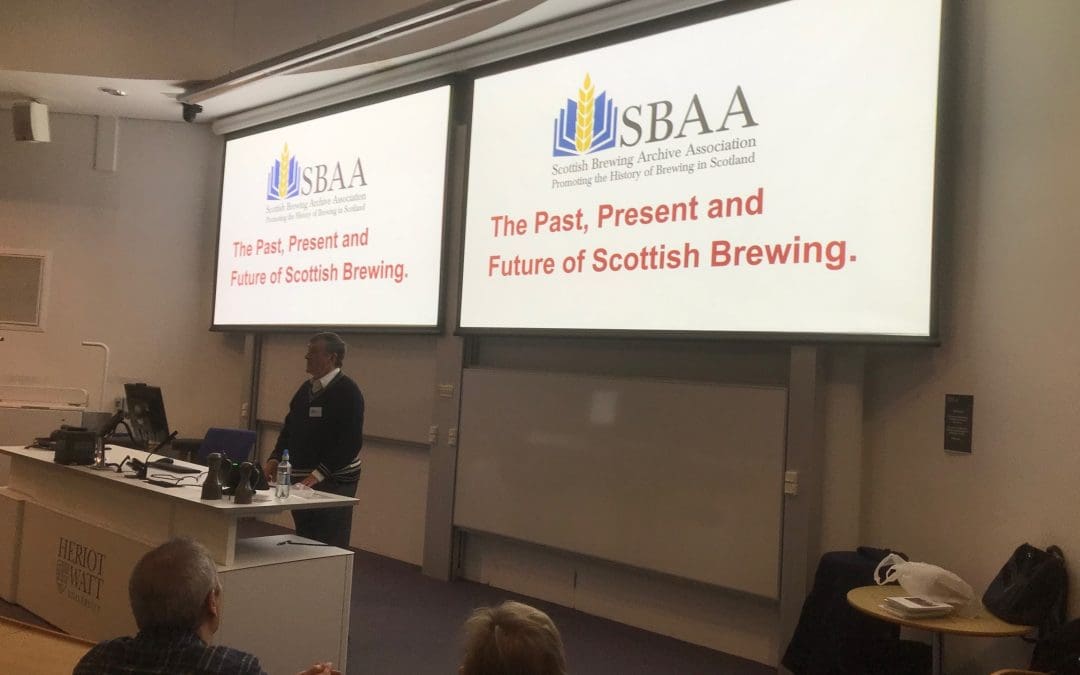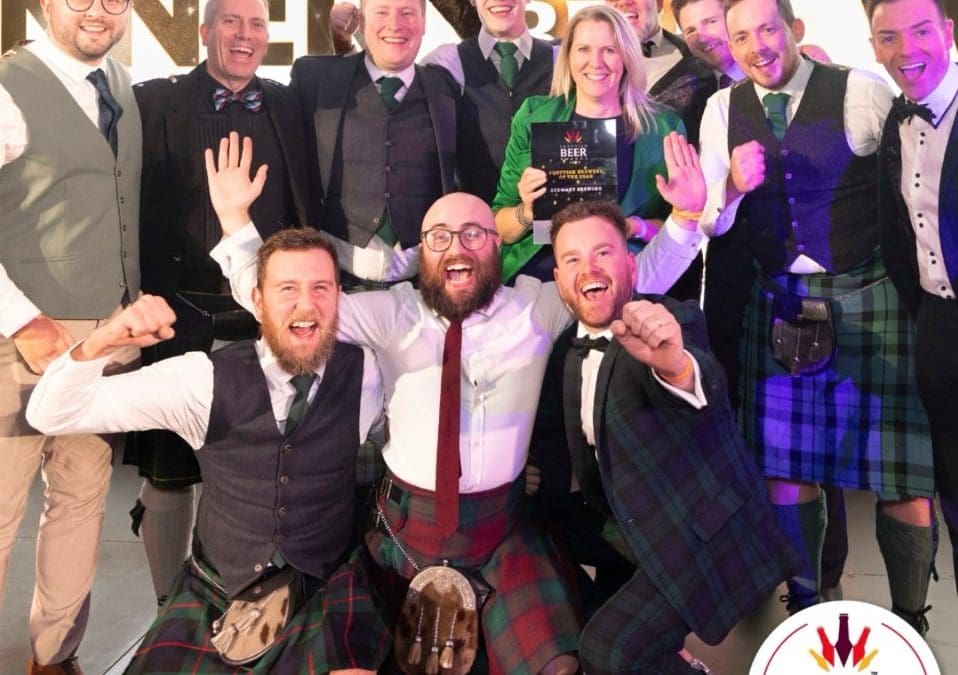1. Chairman’s Statement:
A warm welcome to the April Newsletter.
When I sat down to write this, I was planning to say that I hoped all members were enjoying the warm weather, however lately it has turned very cold with snow and ice making a return, so back on with your winter woolies.
Earlier this year the SBAA committee discussed our plans for this years activities and Ivor our Secretary will provide some details of these later, so please read on. The committee also agreed to have the Newsletter available to all, where previously it was password protected. It was thought this would give a better insight to the workings of the SBAA and for others to become members. Access to the Annual Journal will continue to be password protected. We also agreed to donate £100 to the Ukraine Humanitarian Appeal.
Ukraine has a brewing history. This is the “Beer Museum “ in Lviv created in 2005 to commemorate the 290th anniversary of the opening of the first brewery in Lviv. For more information see the link in Last Runnings at the end of this newsletter.
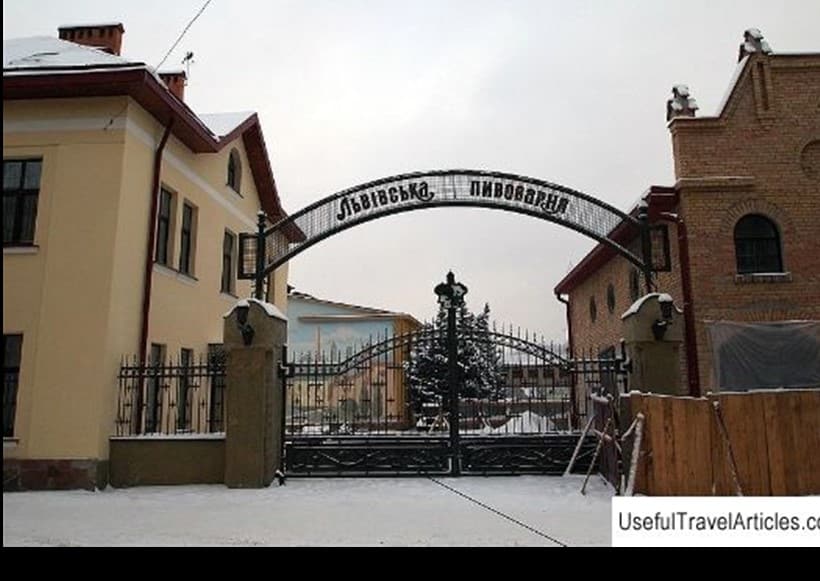
I also found out that this year is Scotland’s year of stories. Interesting stories are a vital part of Scotland’s culture and one of the many reasons why the SBAA continue to research and record aspects of Scottish brewing history, both past and present. We do this in our quarterly newsletter and Annual Journal. As a result, I would like to thank all who have made article contributions for others to enjoy.
Please keep it going.
John Martin
2. Events for 2022
a) Thursday 16th JUNE —-Visit to Crisp maltings Alloa
Crisp maltings are corporate members of the SBAA, and are extending a welcome to the SBAA members to visit there maltings plant in Alloa – on Thursday 16th June 2pm. Our party will be given an exclusive introduction presentation and tour of the operation by Crisp manager and SBAA member Colin Johnston. However, we do need to know the numbers. If you would like to attend please contact Ivor Reid ivor.reid@sky.com before the end of April. We are also considering running a small mini bus from central Edinburgh to the event, again dependent on numbers.
In Summary, please let Ivor know if you are planning to attend this afternoon event, and indicate if you would also be interested in the minibus option before the end of April. We will then issue final details of the visit.
Two other events are at the planning stage; details of the events will be published in the July Newsletter
b) September Evening —-Historic Brewery walking tour
Following the success of last September’s walking tour, the proposal is to take in the sites of 18 breweries that once occupied the Cannongate area of Edinburgh.
c) October – The Johnnie Walker History tour
At the new facility in Princes Street, a tour in the company of the Johnnie Walker archivist.
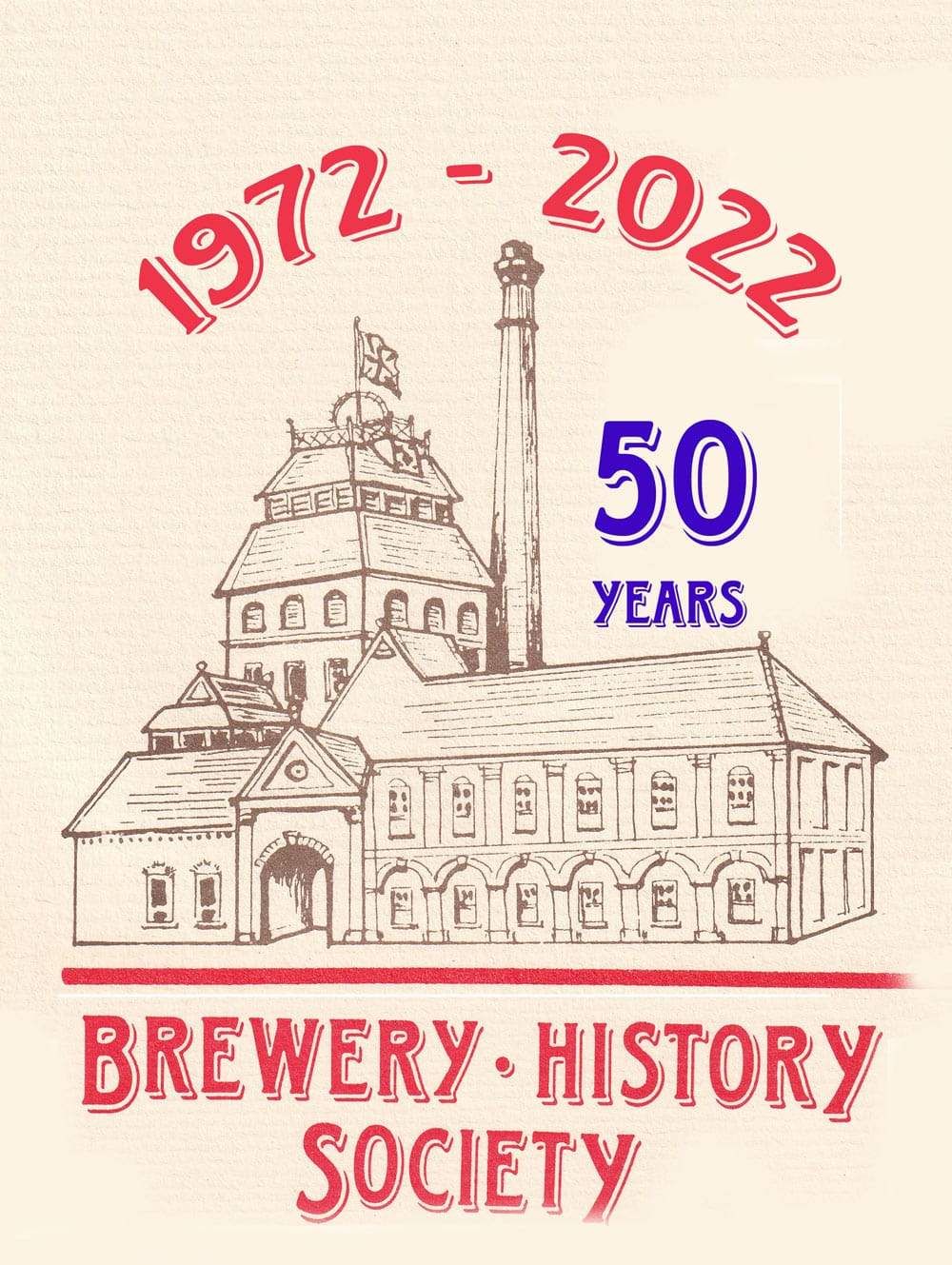
3. The Brewery History Society is Fifty
April 2022 marks the 50th birthday of the Brewery History Society, or more accurately, the 50th anniversary of the publication of the first Newsletter. That was a few simple pages of typed script created by three enthusiasts who used to discuss their shared passion over a pint in a Kent pub. Over the years the publications have evolved and members now receive four in depth Journals and four full colour more informal Newsletters a year, with a number of national institutions subscribing to copies. The Society has also published many books over the years with the latest, fully updated, edition of its flagship publication covering over 10,000 British breweries, A Century of British Brewers, due to be published soon as Brewers of the British Isles 1890 to 2021. There is also a web site (www.BreweryHistory.com) containing a vast amount of information, especially within its Wiki.
One of the many pleasures over the years has been our links with the SBAA and, as normality returns to life, we look forward returning to our joint visits. May both societies continue to flourish for the next half century.
Jeff Sechiari
4. Lager brewing research in the 1880s
While looking for historical sources on the practices and machinery of beer pasteurisation of bottled beer, I came across a reference to a document held at the Scottish Brewing Archive. I am researching microbiological aspects of pasteurisation, not focused on the product to be pasteurised but focusing on the surroundings and influences on the growth of microorganisms in the process water for example.
The SBAA was quick to put me into contact with the SBA at the University of Glasgow, where the document is stored and provided me with a scan of it. The document is a notebook written by William McCowan, the very first brewing chemist of William Younger’s in Edinburgh, and is a detailed report on the technical equipment and processes employed at Carlsberg’s breweries in Copenhagen. McCowan visited the old, the new, the Valby brewery, and the bottling plant of Carlsberg in September 1881 to study the production of lager beer. With his very detailed descriptions of the facility and the brewing process, this document stands out as a historical piece on the beginnings of industrial scale modern brewing. Malting, brewhouse operations, fermentation, finishing and bottling are covered with many technical details as well as architectural descriptions of the buildings constructions, even the soil composition at the site is documented.
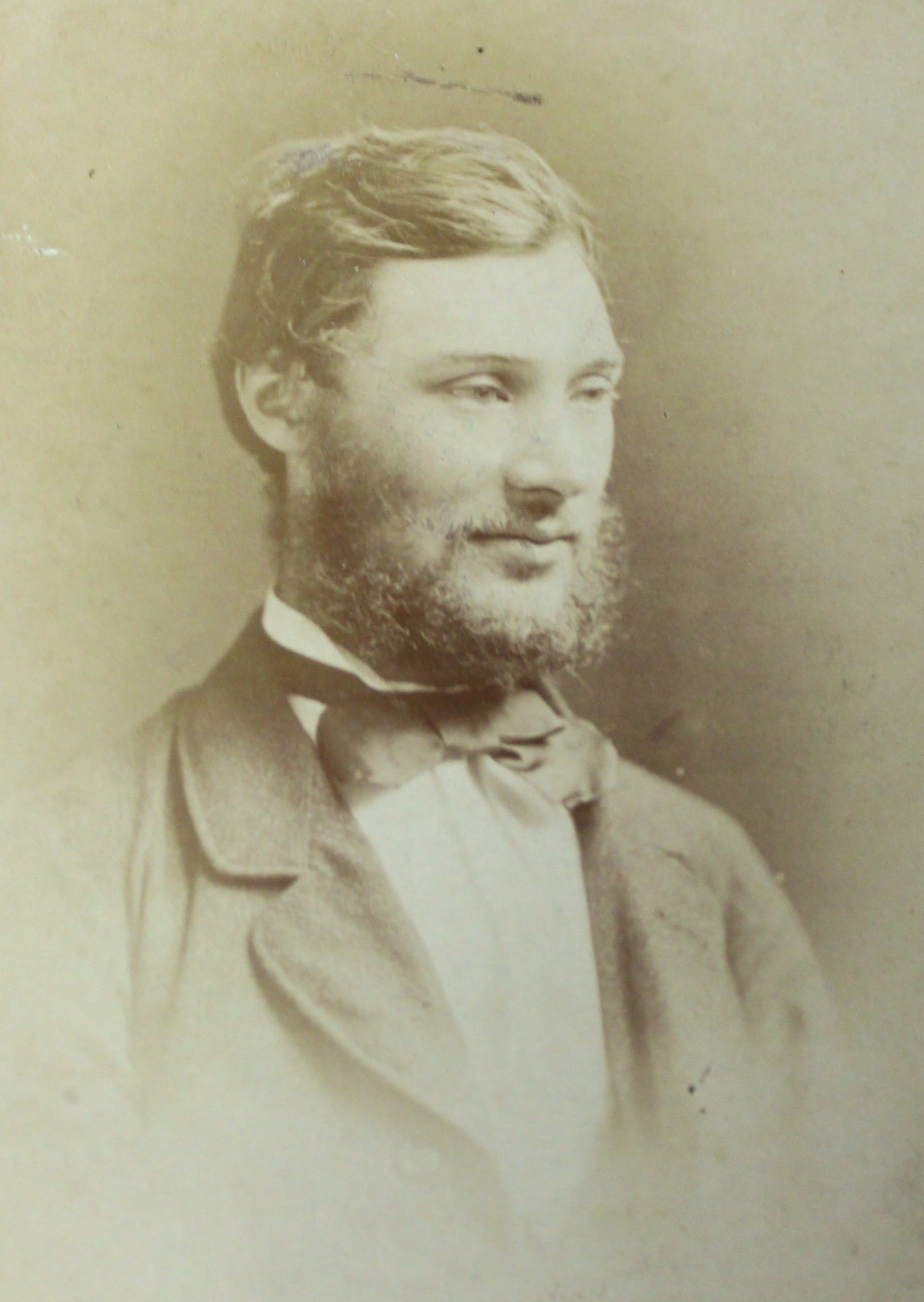
William McCowan
The document “Notes of a Visit to the Breweries of Messrs. Jacobsen Senr. & Junr. Copenhagen” is held at the Scottish Brewing Archive under document number WY/6/1/1/11. Wm. Younger & Co went on to brew lager, using yeast provided by Carlsberg. However, the company later abandoned brewing lager in favour of Pale Ales.
Oliver Kunz
5. The Highlanders
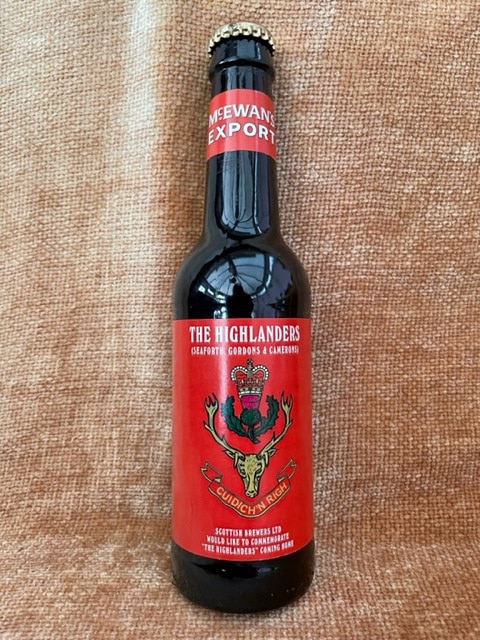
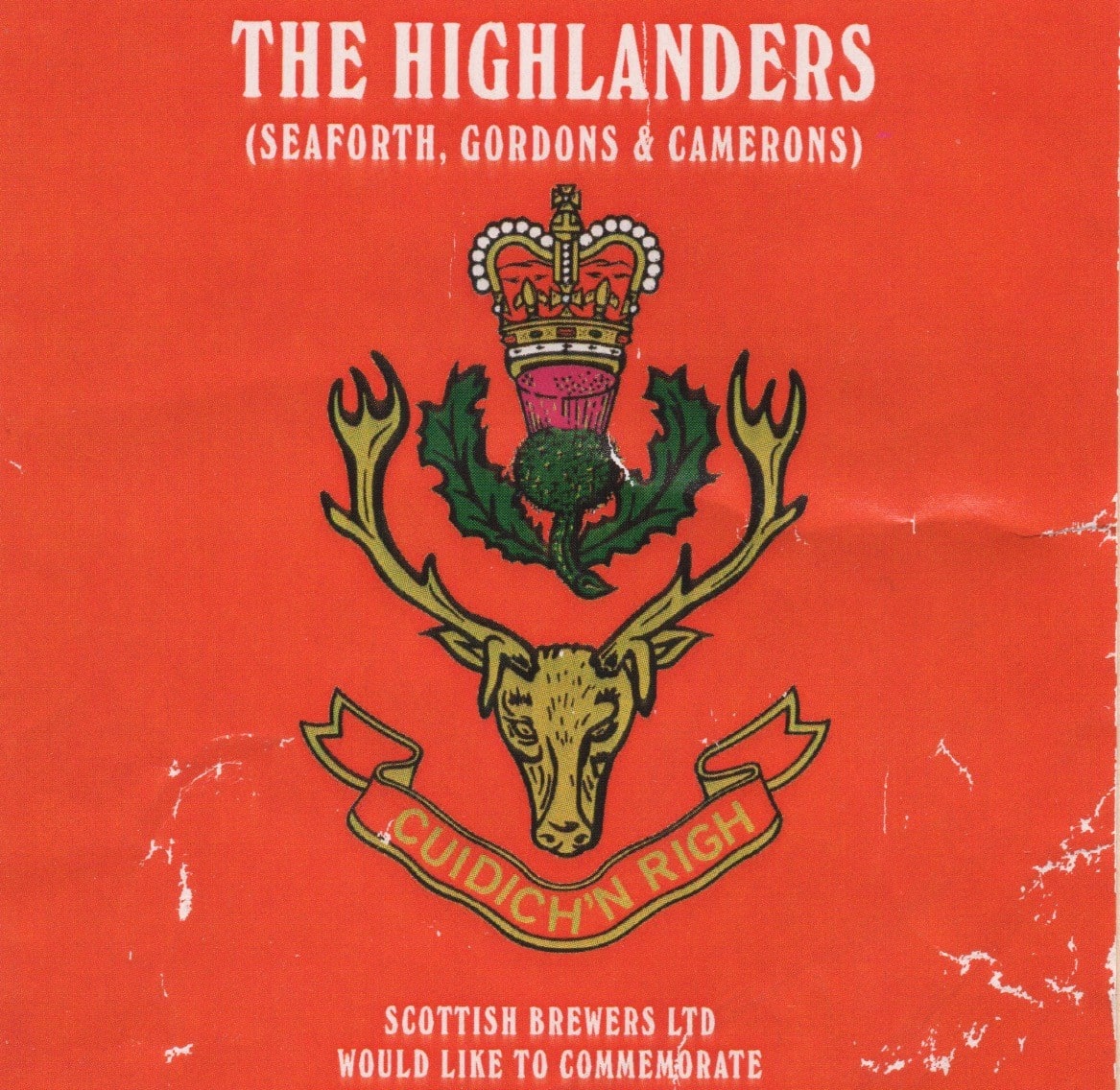
A past employee of Scottish & Newcastle handed this bottle of McEwan’s Export to myself, however what is interesting is the label. This bottle was produced to commemorate “The Highlanders” coming home and I decided to find out more about this.
The Highlanders is an infantry battalion of the Royal Regiment of Scotland, and was formed in 1994 as part of the defence review resulting with the amalgamation of the Seaforths, Gordons and Camerons. On their coat of arms their Gaelic motto reads, Cuidich ‘n Righ, which means, “Help the King”.
The beer was bottled at Fountain brewery between 1994 and 2004 when the brewery was closed, however I have been unable to find out the significance of the regiments ‘coming home’.
I contacted the Highlanders museum, but they were unable to cast any light on this. As a result I am hoping any of our members may be able to offer suggestions in providing other avenues of investigation.
John Martin
6. Brewers’ window – St. Giles Cathedral
When researching William McEwan (1827-1913), the famous Edinburgh brewer and philanthropist, it was thought that he made a donation to St. Giles Cathedral. During his lifetime, William made numerous gifts and donations, which will be the subject of an article to appear in a forthcoming SBAA Annual Journal.
I had previously asked Eleanor Docherty to write an article on the McEwan family, who started by investigating the known leads of enquiry. This involved contacting St. Giles Cathedral in Edinburgh to determine if William McEwan had indeed made a donation and I must admit their reply did surprise me. There was no record of William making a donation, but they did mention that the Brewers of Edinburgh had provided funds for a stained-glass window in 1886. As it happens, William retired from brewing that year, although he did continue as Chairman of his company.
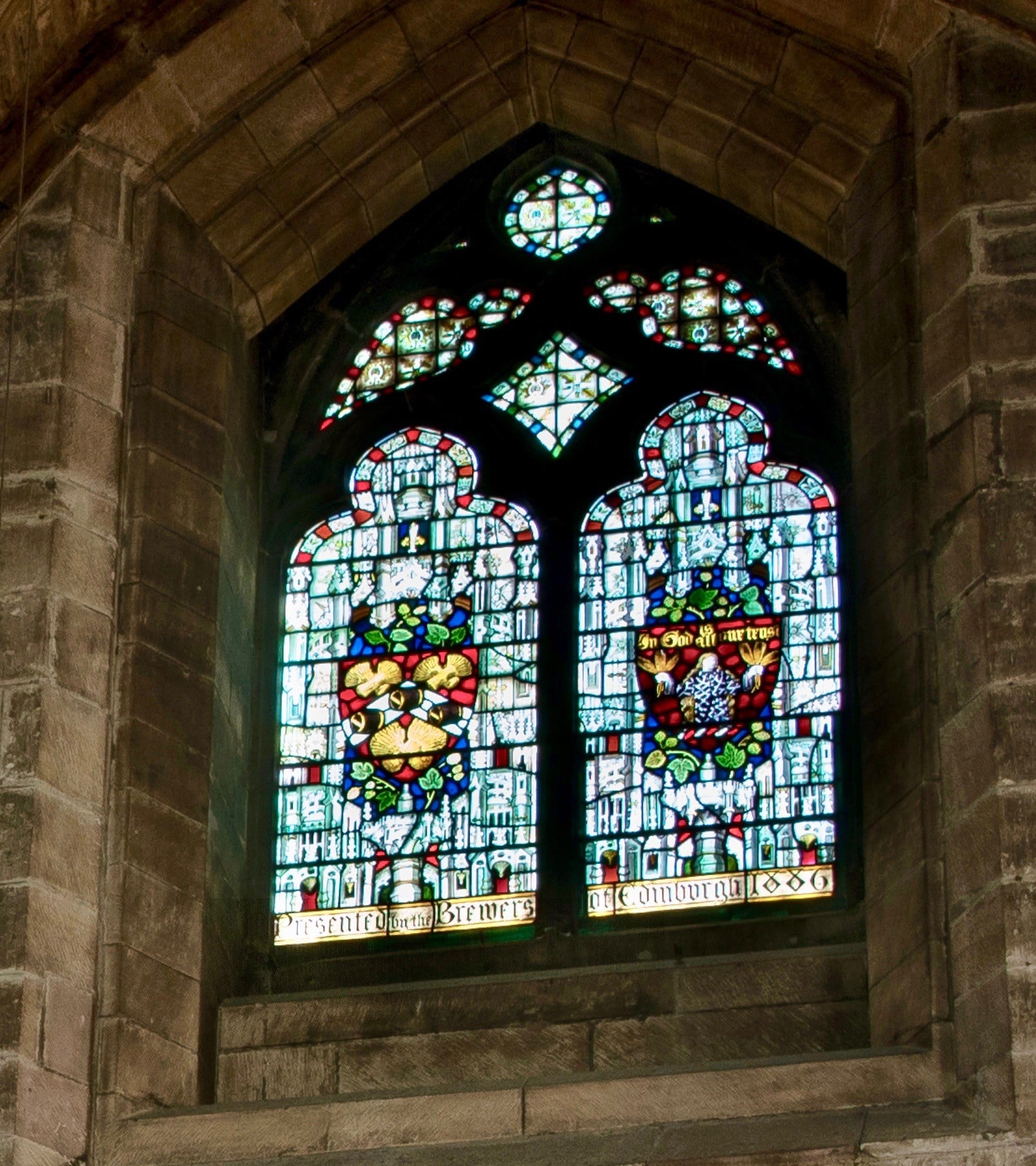
After hearing of this, I made contact with a member of the heritage staff at St. Giles who provided photos of the window. On closer inspection of the window, it shows sheaves of barley, hops and wooden barrels as you may have expected. According to the Scottish Stained Glass Trust, the window depicts the Coat of Arms of the Worshipful Company of Brewers, displaying its motto – In God is all our trust.
There is a further inscription at the bottom of both windows that says – “Presented by the Brewers of Edinburgh 1886”.
However, what is not known is the reason why the Brewers of Edinburgh made this donation. At this time, there were close on 40 breweries operating in Edinburgh.
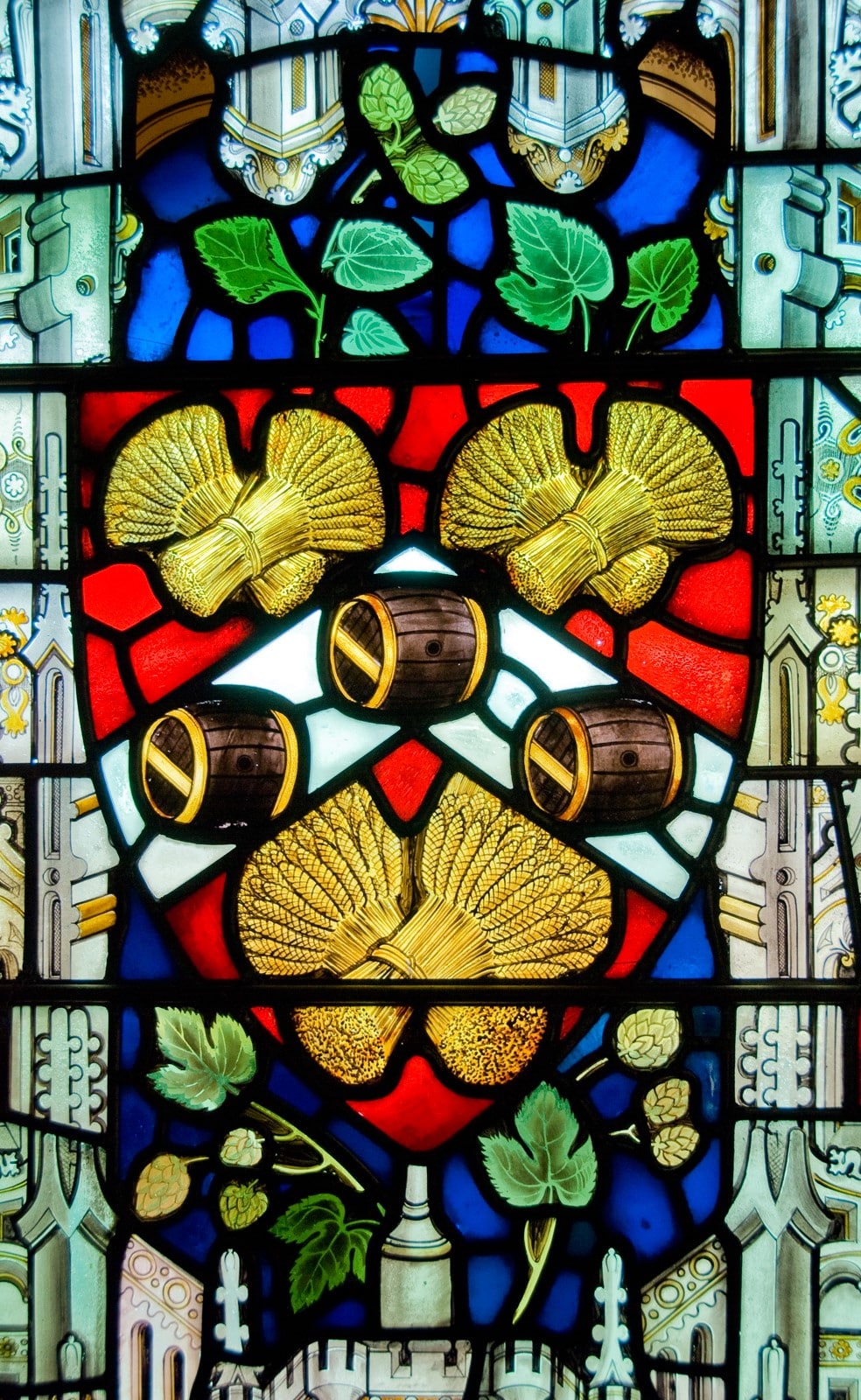
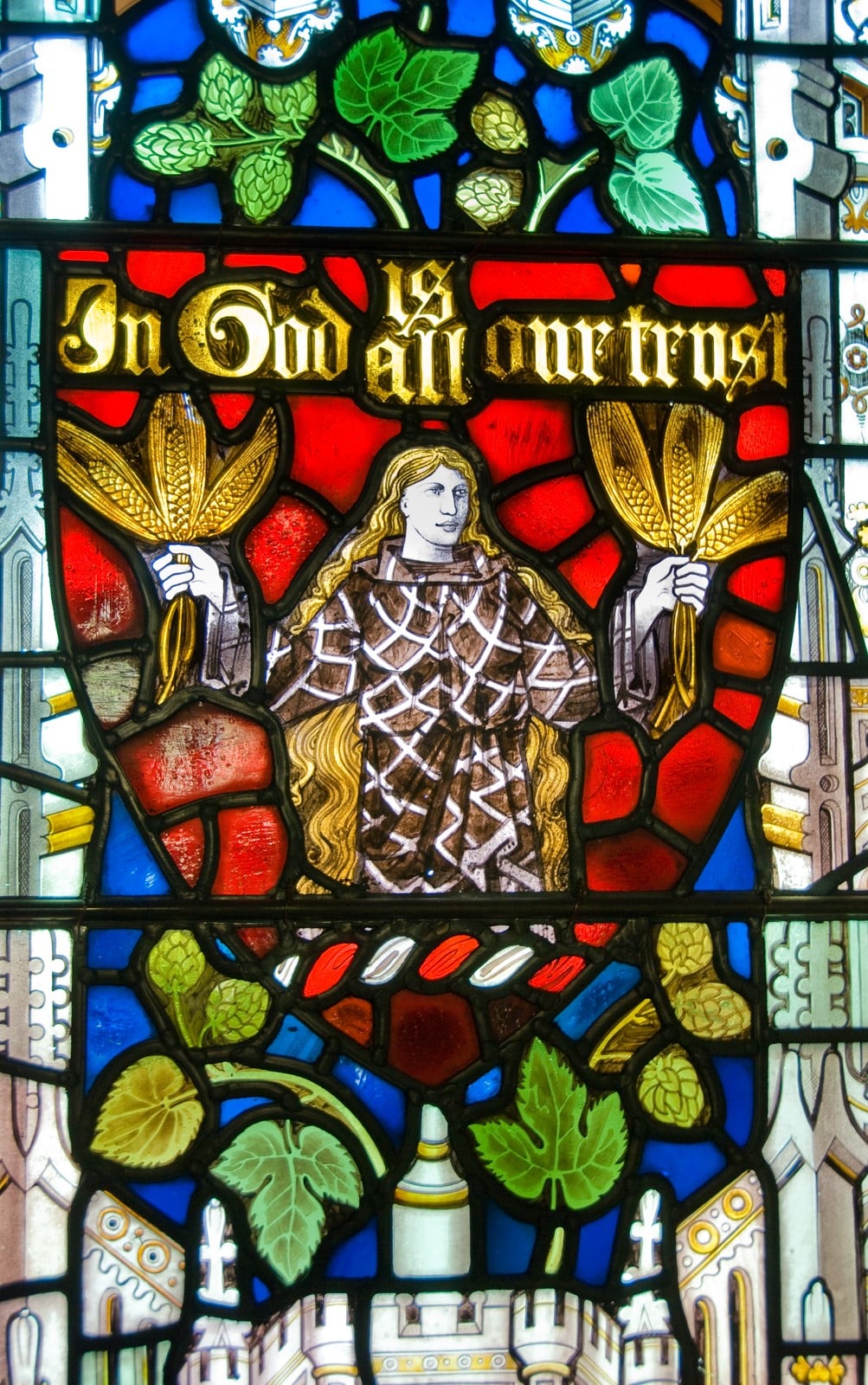
The window was produced by James Ballantine & Son, a stained glass manufacturer. James had few advantages in the way of his education and started work as an apprentice to a house painter in his early life. He later campaigned for the education of apprentices beyond the trade they were learning. He progressed as an apprentice in stained glass and established his own business with a partner in 1837. The brewers’ window is located in the East Clerestory of the Cathedral.
The origins of St. Giles Cathedral can be traced back to 1124, when King David I made strenuous efforts to ensure the spiritual needs of his people were met. However, it was not until the 14th century that the current building began. Over the years, the cathedral has undergone much change, with extensive restoration and expansion in both the Georgian and Victorian periods. The brewers’ window was installed as part of the Victorian restoration.
John Martin Courtesy of St Giles and Peter Backhouse the photographer.
7. Arrol of Alloa
In the last January Newsletter we ran a feature and photo of Arch. Arrol & Sons Brewery Alloa. SBAA Member Michael Clark did some digging and discovered some interesting facts about the Arrol family. “Archibald Arrol had 5 sons – 2 of them took over the brewery after his death in 1888, another 2 were engineers and were responsible for the Connel Bridge, still in use – they also supplied six caissons for the construction of the Forth Rail bridge by their namesake (no relation) William Arrol.”
Their business was the Germiston Iron Works is Glasgow, which at the turn of the century was supplying iron work across the globe including a station in Buenos Aires and notably the famous “Ferris Wheel” in Vienna. It’s amazing how industrious Scotland was at that time.
8. Name the Brewery
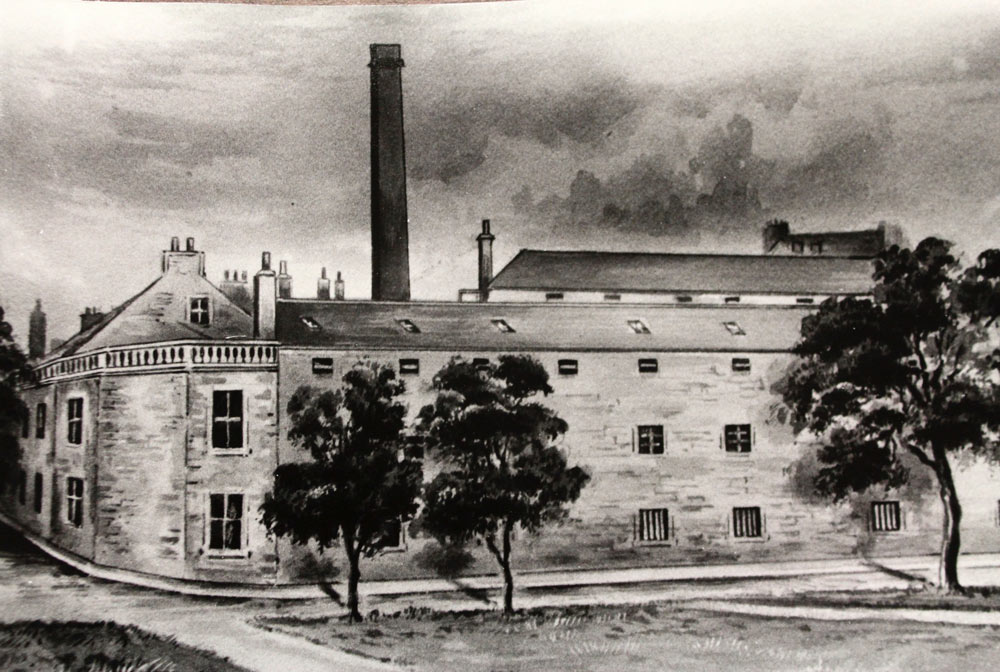
Many thanks to Fergus Clark who spotted the January brewery correctly as the Boroughloch Brewery in Edinburgh. Fergus also supplied the comparison photo of the site today in which you can see the elaborate extension built in 1897. Would welcome any member who could provide any further information in the form of an article.
Rather than a mystery brewery, this time round we have an unknown item recently found along with old brewery cooper’s tools. It was well made just over a foot tall with a cork stopper, leather strap and an intriguing metal spike on a leather tether. Possibly a sampling vessel? We would like to hear from anyone who can clarify what the item is.
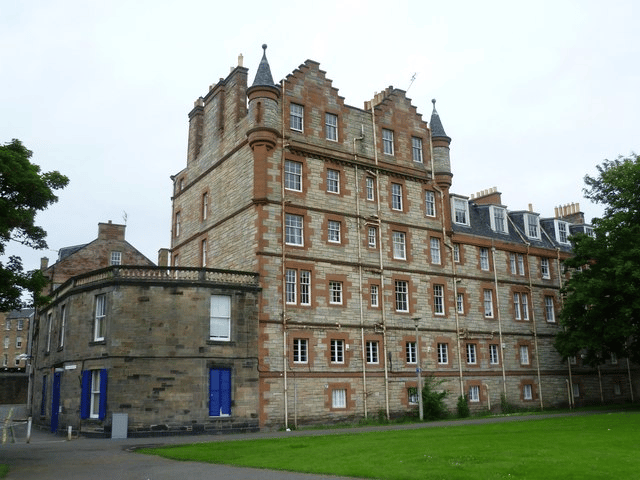
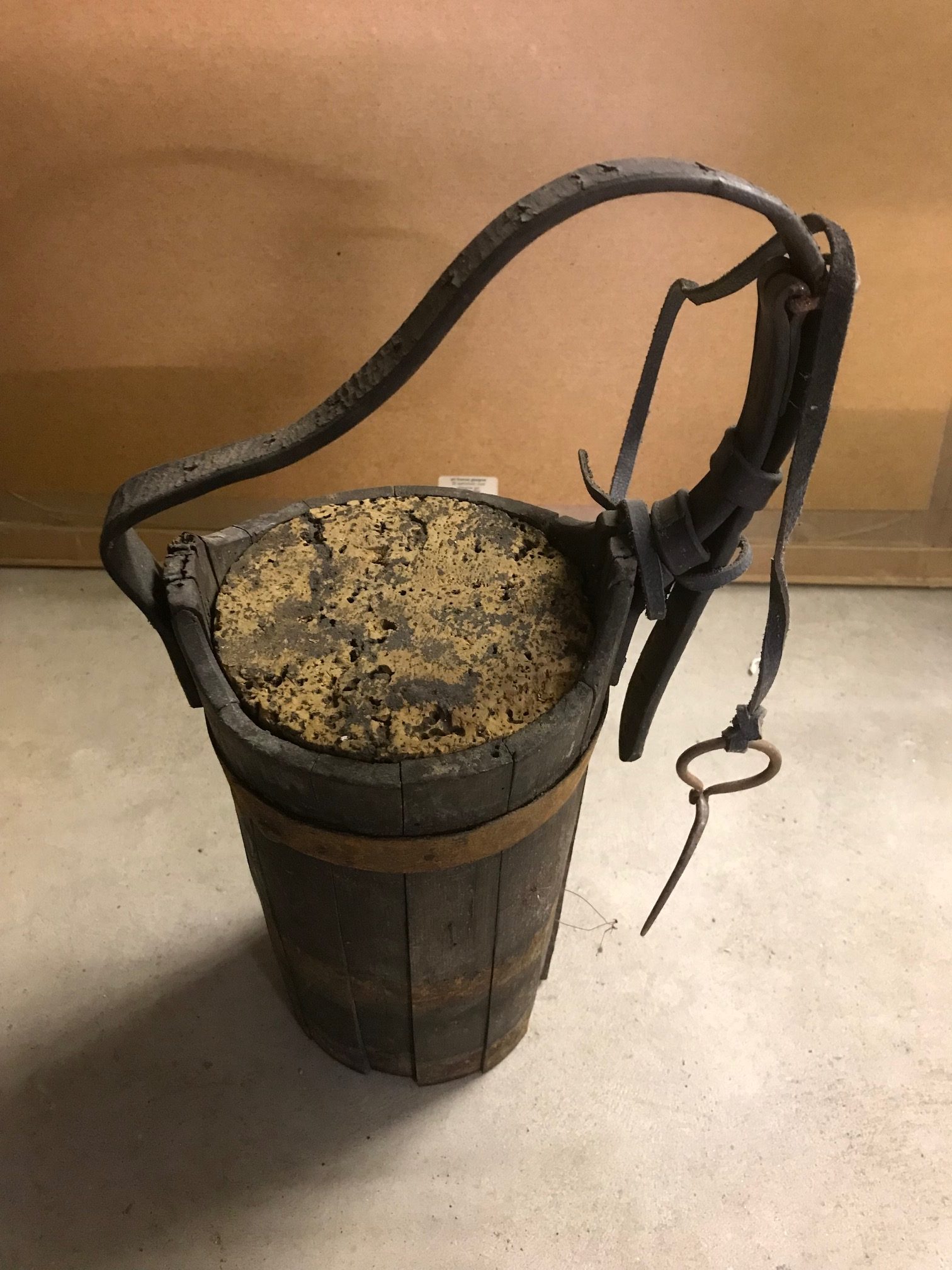
9. Osprey Platform IPA
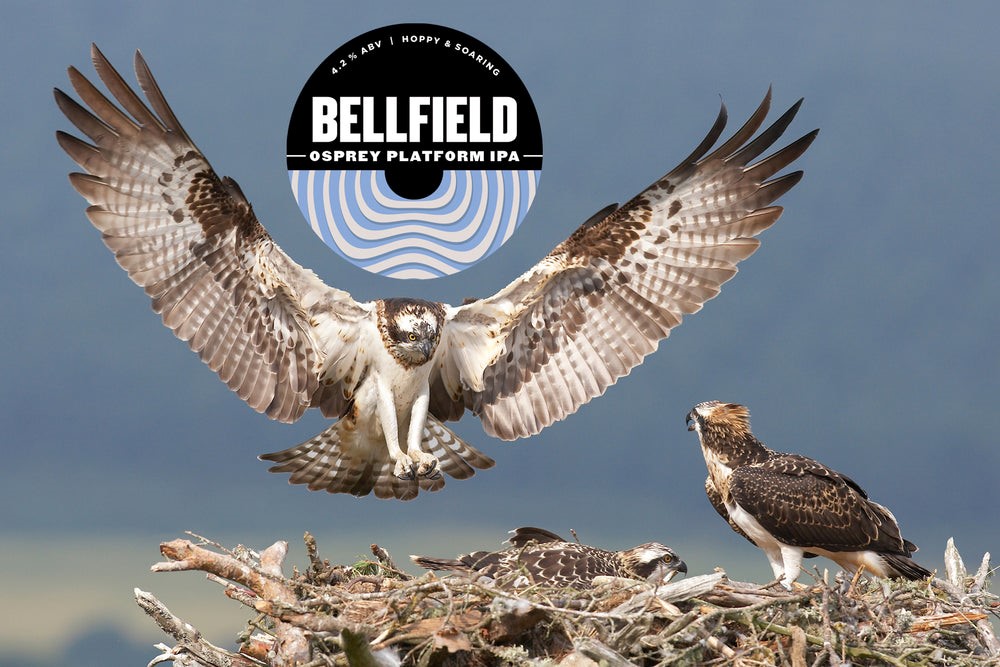
Our corporate member Bellfield Brewery has recently worked with the rewilding charity Scotland: The Big Picture to build a tree high platform to act as a natural nest site for the iconic bird of prey, the osprey.
Building ready made nesting platforms increases the chances that the osprey population will continue to expand when they return from West Africa – where they spend the winter.
To mark this occasion Bellfield Brewery has launched a special beer – Osprey Platform IPA, in its taproom and online to raise further funds for the charity.
Scotland: The Big Picture has already erected a number of similar osprey nesting platforms.
So why not support this project and buy Osprey Platform IPA. The brewery will donate £1 from every pint sold at their taproom and £2.50 from every mini cask sold online.
10. Stop Press – Archive on the BBC Scotland Nine
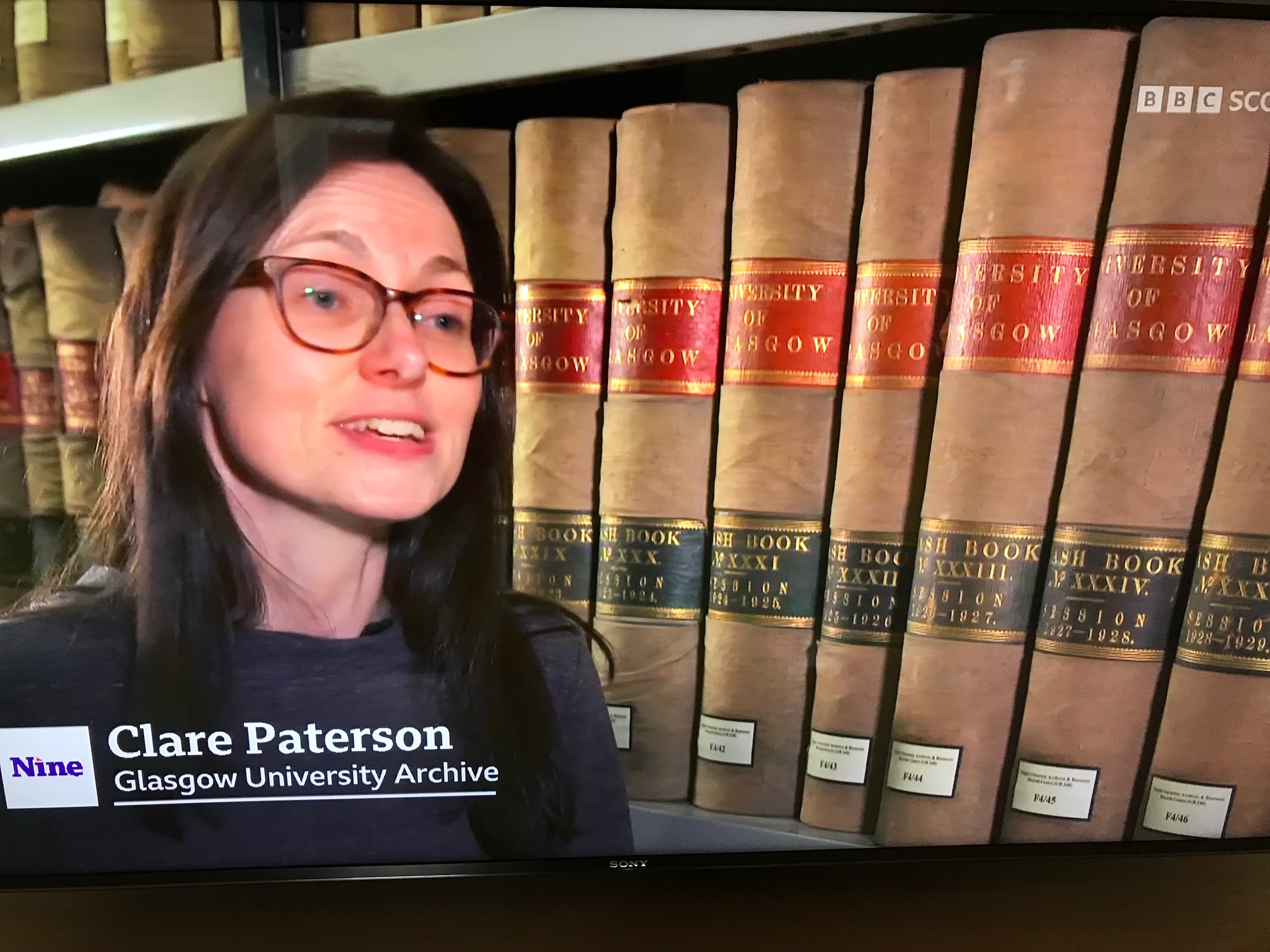
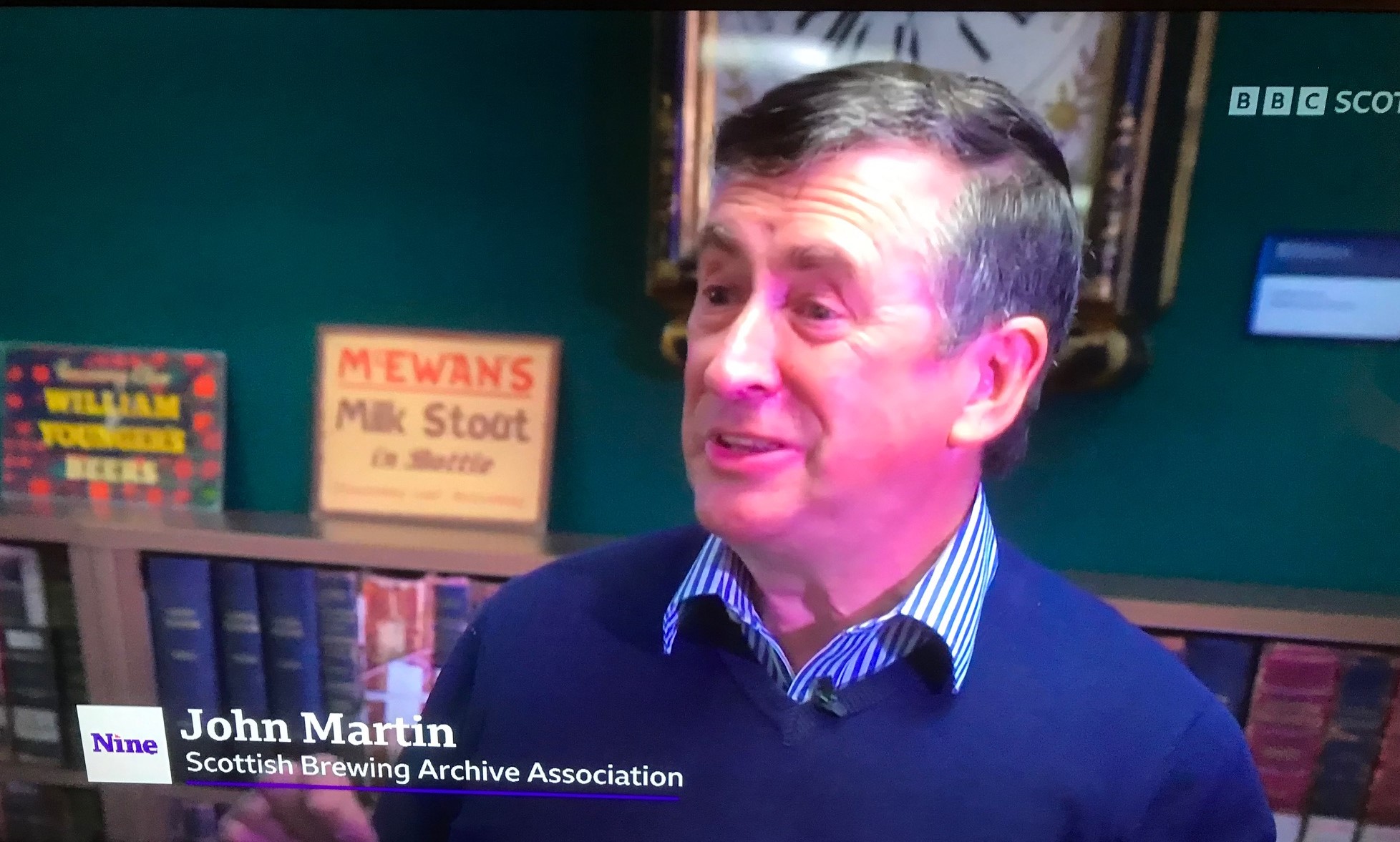
@BBCScotNine
11. Last Runnings
![]() Ukraine Humanitarian appeal – This is the link to the ‘beer museum’ in Lviv , it’s in English and worth a watch – Watch here. Hopefully it will survive the current troubles and flourish.
Ukraine Humanitarian appeal – This is the link to the ‘beer museum’ in Lviv , it’s in English and worth a watch – Watch here. Hopefully it will survive the current troubles and flourish.
![]() WARM WELCOME – Philip Sisson and also Amy Cockburn who has taken over as the Harviestoun corporate representative following the retirement of long time SBAA supporter Stuart Cail.
WARM WELCOME – Philip Sisson and also Amy Cockburn who has taken over as the Harviestoun corporate representative following the retirement of long time SBAA supporter Stuart Cail.
![]() We would like to thank member David Archibald who supplied information on the “Shilling System used for beers” referencing work by Neil Spake 2005. Also, for photos of the Porteaus Mill at Broughton Brewery, on which we intend running a future article.
We would like to thank member David Archibald who supplied information on the “Shilling System used for beers” referencing work by Neil Spake 2005. Also, for photos of the Porteaus Mill at Broughton Brewery, on which we intend running a future article.
![]() The SBAA has been contacted by Ruth Impey who is organising an exhibition in Maryhill Glasgow running between July and October 2022 covering “The Great Glasgow Pottery Tale” She is hoping to feature items from the Possilpark Pottery, notably J&R Tennent items. We hope to bring you more details in the July Newsletter. In the mean-time check this interesting video.
The SBAA has been contacted by Ruth Impey who is organising an exhibition in Maryhill Glasgow running between July and October 2022 covering “The Great Glasgow Pottery Tale” She is hoping to feature items from the Possilpark Pottery, notably J&R Tennent items. We hope to bring you more details in the July Newsletter. In the mean-time check this interesting video.
Watch now
![]() Remember to send in any interesting research stories and photos you may want to share.
Remember to send in any interesting research stories and photos you may want to share.
Correspondence to the SBAA Secretary ivor.reid@sky.com

